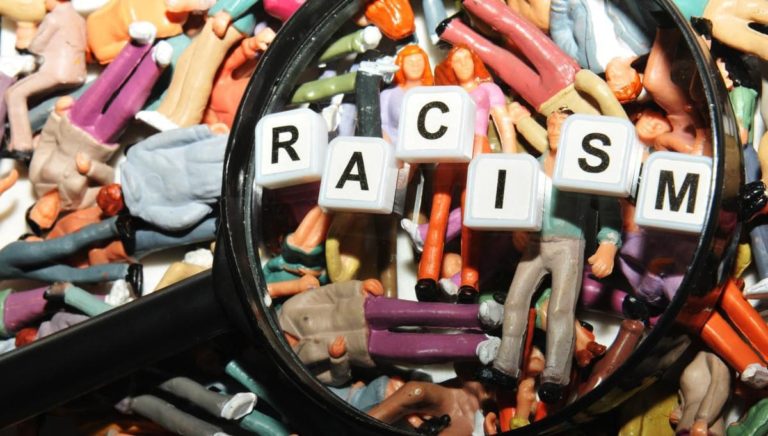It’s rare for a news story to stay in the headlines for more than a day or two. But for more than a month Canadians have been bombarded with stories about the Aboriginal “healing lodges” that are part of the country’s penal system. It began with the revelation that Terri-Lynne McClintic, the young Ontario woman who pleaded guilty to first-degree murder after she lured eight-year-old Tori Stafford into a car so her boyfriend could rape and beat her to death in 2009, had been quietly transferred to a healing lodge early this year after serving less than nine years of her life sentence. Stafford’s father, Rodney, protested loudly that McClintic should be kept behind bars in a conventional prison, rather than serve out her sentence in cottage-style accommodations at an unfenced facility set on a bucolic Prairie landscape. The Okimaw Ohci Healing Lodge on the Nekaneet First Nation in southern Saskatchewan is reserved for female Aboriginal offenders plus those who, like McClintic, opt to follow Aboriginal spirituality and programming in prison even if their claims to Aboriginal ethnicity are uncertain.
Under withering attack from Conservative opposition MPs, Prime Minister Justin Trudeau initially responded by dismissing his critics as “ambulance-chasing politicians.” Public Safety Minister Ralph Goodale said McClintic’s transfer was a bureaucratic decision by officials with the Correctional Service of Canada (CSC) who thought it was “the best way to both rectify her bad practices in the past and also to keep the public safe.” A Tory motion to have McClintic transferred back to a maximum-security prison was voted down by the Liberal majority. But Rodney Stafford brought his protest to Parliament Hill and the controversy refused to die. Earlier this month the government capitulated, Goodale ordered some new restrictions on prisoner transfers to healing lodges, and McClintic was returned to medium-security custody at a conventional women’s prison.

The controversy isn’t over yet. CBC News discovered that nearly two dozen convicted child killers have been housed at Indigenous healing lodges since 2011, meaning some transfers occurred under the Harper Conservative government as well. In fact, the facilities typically host many violent offenders; as of September 30 of this year, according to data obtained from CSC for this story last week, 19 percent of healing lodge inmates were convicted murderers, and 54 percent were doing time for Schedule 1 crimes including assault, sexual assault, and attempted murder.
The first lodges were built in the mid-1990s by Jean Chretien’s Liberal government, around the same time of its 1996 Criminal Code of Canada amendments in which judges were told that, “All available sanctions other than imprisonment that are reasonable in the circumstances should be considered for all offenders, with particular attention to the circumstances of aboriginal offenders.” Those rules were clarified in a 1999 Supreme Court of Canada decision involving a Metis woman named Jamie Gladue, who was convicted of manslaughter in the stabbing death of her husband. The court ruled that when Canadians of Indigenous descent are convicted of a crime and facing sentencing, judges are obliged to consider the general circumstances of Aboriginal people in Canada, such as substance abuse rates and systemic racism, in determining the length of their sentence and where they should be incarcerated. This may lead to a shorter sentence or an alternative to prison, like a healing lodge. The court said that it should be the normal operating procedure for lawyers defending Aboriginal clients to create a “pre-sentence report which takes into account the systemic or background factors and the appropriate sentencing procedures and sanctions,” which are now known as Gladue reports. Taken together, these two landmark policy changes were supposed to reduce disproportionately high incarceration rates among Aboriginal Canadians, who at the time made up about 2 per cent of the general population but 10.2 percent of federal prisoners.
Two decades later, however, the proportion of inmates who are aboriginal has only gotten larger. In 2016, Indigenous people made up 4.1 percent of the nation’s population and 27 percent of inmates in federal prison. What has changed is that Aboriginal criminals now spend less time in prison than non-Aboriginals convicted of the same crimes. Although two-thirds of aboriginal inmates are incarcerated for the most serious crimes (homicide, robbery, sexual assault or major assault) compared to just over half of the non-aboriginal prison population, they are far less likely to receive sentences exceeding 10 years. Technically, then, today Indigenous people may actually be underrepresented in prison, because many would be serving longer sentences if Canada’s justice system was colour-blind.

Healing lodge proponents contend they are effective in rehabilitating criminals and lowering recidivism rates, but the data is thin and ambiguous. A 1998 CSC study initially found a 6 percent recidivism rate among healing lodge inmates, compared to 11 percent of the national prison population. But a later, more comprehensive study that examined all 426 healing lodge inmates released between 1995 and 2001 found that 19 percent had been readmitted to prison for a new offence within four years of release, compared to 13 percent of Aboriginal offenders overall.
Despite the lack of empirical evidence that racially segregated healing lodges and sentencing guidelines reduce Aboriginal overrepresentation in the nation’s jails, Ottawa evidently intends to go deeper into wants to accentuate its two-tier justice system. In 2015, Prime Minister Trudeau committed to “fully implement(ing)” all 94 “calls to action” of the Truth and Reconciliation Commission, which includes not only opening more healing lodges but also “eliminating the overrepresentation of Aboriginal people in custody over the next decade.”
Short of a miracle in which the Indigenous crime rate suddenly drops by an order of magnitude, the only conceivable way for Trudeau to meet that commitment would be even more explicitly race-based sentencing guidelines that force judges to let Aboriginal offenders off with little to no imprisonment even for severe crimes, perhaps combined with earlier parole and release rules. Something along those lines may be under consideration. A “separate, national guideline for sentencing Aboriginal offenders” that “could contain presumptively-binding sentence ranges” was one of the main recommendations of an internal report prepared for the federal Justice department by an Oxford University law professor in 2015. Justice officials provided a copy of the report for this story but refused to say whether the idea remains on the table.
The blow-up over McClintic suggests there are limits to Canadians’ tolerance for leniency in sentencing and incarceration, whatever the justification. And not just among non-aboriginals. Judging from the reaction of members of the Nekaneet First Nation when they found out the child killer was living nearby, the greatest anger might be from Indigenous Canadians themselves, who would be most likely to have such offenders living in their communities.
Another unintended consequence of sharply shorter sentences would be an increased risk of Indigenous youth getting sucked into crime. They would be less fearful of the consequences and there would be incentive for criminal gangs to recruit them because shorter jail terms would mean less time away from work.
The increasingly disproportionate representation of Aboriginal Canadians in crime and the penal system is a social tragedy and a serious public safety issue. The solutions attempted to date appear to be exacerbating the problem, yet Ottawa seems determined to double down on them. The McClintic story and controversy should give politicians and Corrections officials pause to reconsider the path they’re on.
Josh Dehaas is Toronto-based freelance journalist who has contributed to Maclean’s, National Post, Quillette and more. He’s on Twitter @JoshDehaas.






